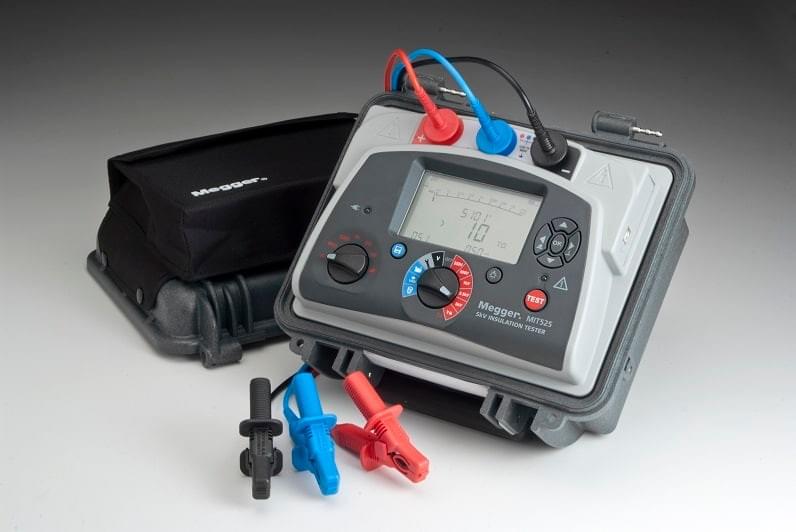
In order to prevent injuries, short circuits and even death, electricians place insulation around charged objects, such as cables and machinery. But insulation can become faulty, and the only way to notice a faulty insulation unit is with an insulation tester.
The first insulation tester was invented by a company called Megger, who have a century of experience in manufacturing these devices. They offer models from 5 kV, 10 kV and 15kV.
Megger insulation testers are used to check for any electrical leakage (much like water leakage). When they were first introduced, their primary use was for medical devices, however now they are used for cables and other electric devices. They are used to determine if the insulation is performing at peak efficiency and safety. Things that can affect the performance of insulation are extreme levels of heat or cold, moisture, vibrations, dirt, oil and corrosion, they can all deteriorate the isolation. This is the main reason why insulation testing should be a priority, and be done routinely.
Total Currant Testing with Insulation Testers
To measure the quality of the insulator, you need to measure the resistance to current flow through it. A high level of resistance means that the insulation is in top condition and that very little current escapes from it. If however the resistance is low, then that means that a steady high dosage of current is escaping and you need to replace the machinery before any further damage is done.
The total current that flows through the insulation unit during testing is the resoult of capacitive current, absorption current and leakage current.
Capacitive current – The first current of voltage that is applied to the conductor is called capacitive current. It starts with high power and then once the conductor is full, it quickly drops down.
Absorption current - Much like the capacitive current, absorption current also start off with high power and decrees, although it does it at a much slower rate. This is used to test if there is any electricity pockets being stored in the insulation. This is a very important part in testing quality and integrity of the insulation unit.
Leakage current – Also known as conduction current, this small, steady current is present both on the inside and outside of the insulation unit. Any increase in the leakage current directly correlates as a decrees in resistance. If resistance is low, this means that the quality of the insulation is low as well.
Types of Insulation Tests
There are a few ways you can use a Megger insulation tester and it all depends on what results you want to achieve. Some of the most used tests include:
Proof Test – The most common usage for performing proof testing is when applying new electrical machinery. It is used to protect from faulty wiring and defective equipment usage. This is usually the go/no go test which determines if the system is installed correctly. This test is performed by applying DC voltage to the circuit using the Megger insulation tester. If nothing goes wrong the test is then successful. The amount of DC that's used on the circuit during the testing is much higher then it's regular use.
Short Time Reading Test – This test involves the tester to be connected to the insulation, after which a high dosage of voltage is applied for 60 seconds. This method is used to monitor the activity of insulations over a long period of time and such a test is performed every one month. It is quite important to maintain the same voltage dose and application time for best results. If at any point a decrees in efficiency is noticed, it probably means that the insulation unit is exposed to heat or moisture and that is helping speed up corrosion of the insulation.